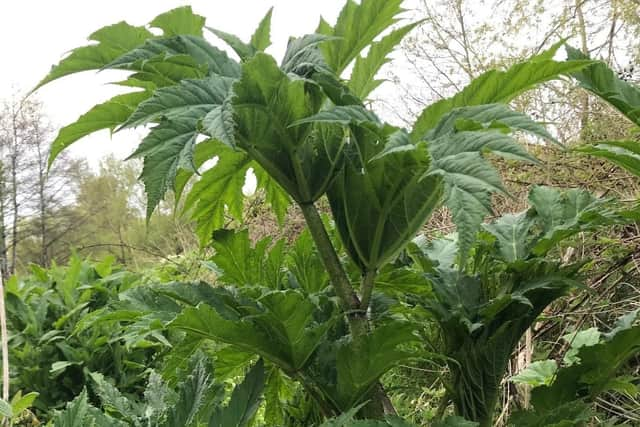Worthing residents warned about 'toxic' hogweed as summer holidays start
and live on Freeview channel 276
The plant’s sap is reportedly toxic to the skin in sunlight and cases of exposure are often reported in the summer holidays when young people encounter it.
Contact with the non-native weed, followed by exposure to sunlight, has been known to cause severe discomfort and blistering to the skin.
Advertisement
Hide AdAdvertisement
Hide AdThe warning was issued by the Property Care Association, a trade association representing property specialists like contractors, surveyors, consultants and managers, who solve specific problems with buildings.


Dr Peter Fitzsimmons, technical manager of the association’s invasive weed control group, said advised young people to stay away from the plant and ‘not allow its toxic sap to come into contact with the skin in the sunlight’.
“Each year we hear of people who are injured by Giant hogweed and quite often it is children who encounter it while out playing in the summer holidays," he added.
“The sap can also be transferred via touch, so it can possibly affect somebody else through clothing and footwear.
Advertisement
Hide AdAdvertisement
Hide Ad“Symptoms include a rash, itching and blisters where skin comes into contact with it.
“In some cases, the blistering can be so severe that urgent medical attention is required.
“The situation is made particularly serious as this can become a long-term condition, an allergic response called ‘sensitisation,’ which can recur over a period of years, with the rash and the itching coming back every time the skin is exposed to sunlight.
“Where exposure has occurred to the skin, we recommend washing the affected area, covering it up and seeking medical advice immediately.”
Advertisement
Hide AdAdvertisement
Hide AdCapable of growing as tall as five metres, Giant Hogweed has a five to eight centimetre stem diameter and a large, white umbrella shaped flowering head. The stem, meanwhile, is usually covered in bristles, with blotchy purple markings.
Although it looks similar to the UK’s hogweed, the native plant is much smaller and its leaves have a smoother outline.
Dr Fitzsimons added: “As well as the public safety issue, Giant hogweed’s ability to spread far and wide can really impact on the ecology of an area, as it creates a dense canopy cutting off light at soil level and has no known natural pests or diseases.”